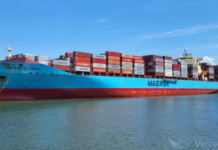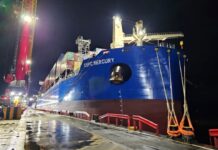
The Port of New Orleans (Port NOLA) announced progress at the Louisiana International Terminal in St. Bernard Parish on 27 October, including investments in sustainability, updates to transportation infrastructure and a new terminal design that directly addresses early community input on traffic, neighborhood buffers, drainage and more.
The US$1.5 billion container facility on the Lower Mississippi River will serve larger vessels coming online in the container industry, according to the port’s statement.
Construction of the terminal, located in Violet, St. Bernard Township, currently in a multi-year planning and permitting process, is scheduled to begin in 2025 with the first berth scheduled to open in 2028.
Port NOLA also announced massive investments in sustainability sector. The Louisiana International Terminal will be equipped with shore power, allowing ships to connect to onshore electricity and to turn off diesel engines while at dock.
Shore power can eliminate up to 98% of ship-related emissions, significantly reducing the environmental footprint of a marine terminal, noted Port NOLA.
Operators will also invest in a large electric fleet of equipment, while Port NOLA is working with Entergy Louisiana to develop an on-site substation to meet the terminal’s electricity needs.
Another goal for the terminal is to be designed in line with the development of barge container services, which move containers up and down the river by barge instead of by road or rail.

“One of the benefits of building a new terminal from the ground up is that we can implement the latest advances in green technologies,” commented port NOLA president and CEO, Brandy D. Christian.
He added, “And with air quality and noise common concerns that came up in our community outreach, I’m pleased to share our partners’ early commitments to sustainability.”
The St. Bernard Transportation Corridor, which intends to connect Lower St. Bernard to the interstate system and will serve the terminal and the public, has received a US$50 million funding commitment from the Louisiana Legislature and has been added to the Metropolitan Transportation Plan.
Last week, the state of Louisiana released US$2 million of those funds to the Regional Planning Commission to conduct a feasibility study for the corridor, which will begin soon.
The project is at the beginning of a federal permitting process required under the National Environmental Policy Act (NEPA).
That includes studies on issues ranging from traffic and cultural resources to wetlands and air quality.
The US Army Corps of Engineers, which oversees the process, will analyse the results of these studies and decide whether to issue permits for construction.





